#manually transcribing sheet music note by note
Explore tagged Tumblr posts
Text
what have I spent the last hour and a half doing?
Oh... *chuckles*
you know....
the usual...
#manually transcribing sheet music note by note#measure by measure#into a google doc#at this point go ahead and lock me up in the asylum#im ready#not because this is an insane thing to do#no no this is normal#i just feel insane enough to fianlly be there#my skin is about to crawl off from the sheer amount of dotted eight notes and motherfucking eight rests
2 notes
·
View notes
Text
Braille Music and Transcription Services: From Sheet Music to Accessibility
Music is a universal language, but for individuals with visual impairments, accessing written sheet music can be a challenge. This is where Braille music and transcription services play a crucial role. By converting standard sheet music into Braille, these services ensure that visually impaired musicians can fully engage with and enjoy the world of music.
The Need for Braille Music Transcription
Access to music notation is essential for learning, teaching, and performing music. For visually impaired musicians, traditional sheet music isn’t an option. Braille music transcription bridges this gap, providing an accessible alternative that retains all the nuances of standard notation. Whether you are a budding musician or an experienced professional, Braille music opens doors to countless opportunities in the musical world.
How Braille Music Transcription Works
Braille music transcription involves converting the notes, symbols, and other elements of sheet music into a tactile format that can be read using the fingertips. Unlike literary Braille, Braille music has its unique system of notation. Specific Braille symbols represent each note, rhythm, dynamic marking, and articulation. Skilled transcribers ensure accuracy and consistency, making the music easy to follow for Braille readers.
Advanced technology and software now complement traditional manual transcription methods. Tools like music notation software and Braille embossers allow for faster and more efficient production of Braille music scores. However, the expertise of a professional transcriber remains vital to ensure precision and readability.
Why Choose Professional Braille Transcription Services?
Professional transcription services, like those offered by Braille Music and More, bring several advantages:
Accuracy: Experienced transcribers understand standard and Braille music notation, ensuring every detail is correctly translated.
Customization: Services can be tailored to individual needs, from simple pieces for beginners to complex scores for advanced musicians.
Timeliness: Meeting deadlines is critical, especially for students and performers preparing for exams or events. Professional services ensure timely delivery without compromising quality.
Who Benefits from Braille Music Transcription?
Students: Access to Braille music enables visually impaired students to participate fully in music education, from introductory lessons to advanced courses.
Teachers: Music instructors working with visually impaired students can use Braille scores to enhance teaching methods.
Performers: Professional musicians can use Braille scores to prepare for rehearsals and performances, ensuring they stay on par with their peers.
Music Enthusiasts: Hobbyists and casual learners can enjoy the joy of reading and playing music independently.
Beyond Music: Other Transcription Services
In addition to music, transcription services can convert other materials into Braille, including:
Lyrics and librettos
Program notes
Educational materials
Workshop and event handouts
These services expand accessibility, fostering a more inclusive environment for visually impaired individuals in various fields.
Accessibility Matters: Take the Next Step
Accessibility is not just a matter of convenience; it is a matter of inclusion and equality. Braille music and transcription services ensure visually impaired individuals have the same opportunities to learn, teach, and perform music.
At Braille Music and More, they are committed to making music accessible to everyone. Whether you need sheet music transcribed into Braille or other materials adapted for visually impaired users, they can help you. Contact them today to learn more about their services and how we can support your musical journey.
0 notes
Note
hey!! sorry if this is a dumb/common question, but do you have any advice on how someone goes about MAKING a midi?? i can’t find a straight answer anywhere else
so like for making a MIDI file itself? you basically need to just play the music you want into a MIDI production program, or to locate sheet music and transcribe it into the same software.
what the midi file is, in the end, is a list of all the notes to play, with which instruments, and which lengths and strengths to play them with. as such it’s up to you to determine all those components - and if you’re trying to transcribe a popular song that doesn’t have official sheet music available, that’s going to mean a lot of trial and error when you try to figure what’s being played in the real song and when. software like this https://www.midieditor.org/ or https://www.anvilstudio.com/ allows you to create the actual files via either playing a midi-compatible instrument into your computer, or “playing” via having regular computer keyboard keys assigned to different notes, or of course manually placing each note and its time.
11 notes
·
View notes
Text
Review Of Acousterr Music Transcriber
The music is divine. An individual interested in learning music can make it a profession or can learn it for fun. Albeit there are several ways through which you can stay close to music like learning instruments or singing. But after all it is you who have to choose, the way you want to opt.
Be it a song or an instrumental piece, musical notes play an important role. While listening to the song the expert and the already established learned musicians can make out the notes in that song, and write it down, converting into musical notes. A writeup of those musical notes can be represented in sheet music notation or tablature notation. This sheet music can help people play the song by themselves on their musical instruments. Tablature notation is more used by people learning stringed instruments such as guitar or ukulele.
The process to convert a song into musical notes is called transcription. A song is a delight to hear, nice and easy to sing, but when it comes in terms of musical notes and all, this song all of a sudden seems the utmost complex thing. Beginners may find it extremely confusing and frustrating to decipher a song note by note, and identify the chord changes and tempo. What if this process could be automated?
The Acousterr music transcriber makes a complex song into very simple musical notes. The application is so easy to use that any new music learner, will not be at all confused about how to use it. All the musical notes are so easily obtained that learning the particular song is fun, rather than any other difficult method. Plus it gives sufficient editing power to the user so that he can manually adjust notes and slow down a song without any pitch shift.
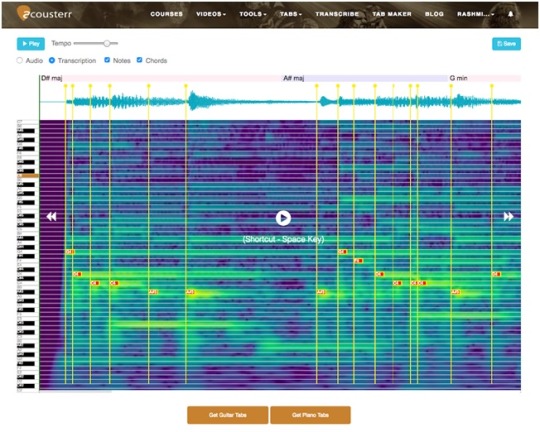
Notes Visualized In Spectrogram Editor
What makes Acousterr Music Transcriber so appealing?
Difficult task become easy:
When a new learning individual or a music student tries to play any song, they can find it very difficult to convert the song into musical ones. The difficulty can lead to him quitting learning music. So should one just quit, even if he loves music, just because he cannot jot down the musical notes? No, not at all there are various other options. One of the easiest is automatic musical transcription. This helps them in making music easy to understand by automating the process using complex signal processing algorithms.
This application helps the newly learning musicians to understand the song, and sing or play accordingly. There is no need to depend on the other people to prepare written music sheet or tablature transcriptions, and then play the specific music.
Modern technology for music lovers:
In this digital era, automation has come a far way. Anything is easily possible due to technology. By handing them the musical notes which in turn help them in playing music saves time as well as avoids dependencies. Once the audio is processed the person can easily get access to the musical notes and can play the song all by himself.
The app is very good for the artists as it very comfortable to use to make music, all the notes of music or other options are easy to find out by going into the specific section required. It even gives out the chords and tempo of the song, with precise location of chord changes. Eventually the results can be exported to tablature notation for guitar or piano, which is much simpler to understand for beginners. It’s useful for both rhythm and lead musicians as both chords and melody transcription is done. The main page of this app allows one to specify a youtube URL or an upload mp3 file or an on the fly microphone recording, for which you want the chords and tabs. The spectrogram editor shows all the options present in the app very clearly so that one can go to the track, visualize the note energies with time and can even listen to the track in slow tempo and keep on editing notes side by side.
When a song is played with the app an artist can obtain melody notes for sure, other than this:
➢ Replay in slow motion,
➢ View chord progression and precise locations of chord changes
➢ An useful visualization of detected notes on spectrogram
➢ Get tempo in terms of BPM
➢ Playing back for any number of times.
All these are available on the application to make music for a new learner. What is awesome is it is an end to end web platform without any need for a third party tool. Every tool is well integrated with the platform - be it a spectrogram editor or a tab player for playback and visualization of tablature.

Notes exported as guitar tablature - in Acousterr Tab Maker

Notes exported as piano tablature - in Acousterr Tab Maker
Fast and easy:
Its a web application, so no installs needed, no worrying about diminishing internal memory and having to clear up space for installation. This web app would truly simplify the process of transcription of the song into the musical notes. The app processes the audio within a span of 10 to 60 seconds, which can be revolutionary for the new learners as well as the pros in the music industry.
No hassle of going anywhere:
Acousterr is not only restricted to the music transcription, its also a community driven platform where people can contribute tabature for musical instruments like guitar, piano, ukulele, mandolin, bass guitar etc. There is an upvote downvote system just like quora which can help you select the best lesson to follow. The learner can learn the instrument of his choice without any difficulty and that too by sitting at home and in the timing preferred by the student.
No hassle of joining the music classes, no wastage of time in traveling and no need of paying heavy tuition fees, or learning in groups without understanding anything. The app has the user-friendly software that allows aspiring learners to learn any musical instrument of their choice.
A patient teacher, an app!
The results are eventually displayed in Acousterr Tab Maker - an amazing tablature editing and learning tool. It provides features for practicing along a tab on your guitar or piano. When a note is played with the app an individual or the student has to repeat it with the help of cues provided on screen. If the music played is right, the app automatically plays the next note, if not, then the notes remain displayed on the screen till the right note is played by the student. This allows the individual to learn slowly according to his pace, there is no need to hurry.
Not only for fun but beginning of a new career
A person can also create compositions in the form of tablatures and sell them on Acousterr nurturing the songwriting talent and providing an additional revenue stream for musicians. Contributing tabs to the community can help you get noticed by potential students. This can be a business opportunity for music teachers - much like what Youtube videos achieve for musicians today.
A new career, where a person loves the work he/she does, and plus make money so overall it is a win-win position.
What type of music can be transcribed?
Cean piano and vocal songs are transcribed best. Nevertheless the editing and visualization capabilities of the tools enable users to transcribe any song swiftly with ease. Its like ‘Google Translate for music learners’, so give it a try @acousterr.com
Link : https://www.acousterr.com/transcribe-music
1 note
·
View note
Text
Converting Audio Files to Sheet Music
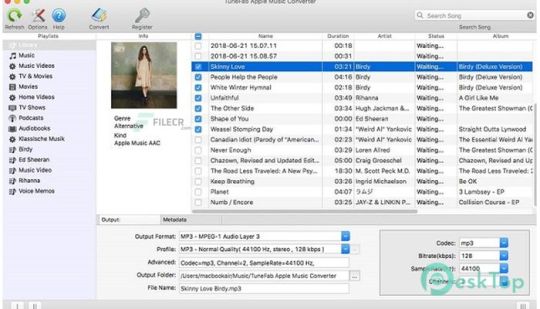
There are several programs that attempt to create sheet music from audio files but as of yet none have been able pull it off effectively. I remember several years back I used one program called "Melodyne" which was able to convert audio files into music notation. However, anything that was not strictly monophonic would not be rendered correctly. In music "monophony" refers to a single melody that is played without a harmonic accompaniment. A good example of a monophonic sound is a tin whistle. That said, Melodyne was not actually created as means to convert audio files into sheet music. It was designed more for the purpose of remixing and reshaping melodies. I found that it worked very with female vocals as you could take a vocal sample, shift and stretch the notes around and make it so that the original melody is practically unrecognizable.
The reason why it is so difficult for these apple music converter programs to make this conversion is because audio files are very complex. A standard audio/mp3 file will contain several instruments playing at the same time, all with different pitch, volume and duration. It would be practically impossible for a piece of software to isolate or recognise an individual sound within this harmonic spectrum.
If you want to get sheet music for a particular song a better solution might be to try and find a MIDI version of the song. There are many websites where you can download MIDI files for free. However, from my experience many of the free MIDI files available for download have not been transcribed correctly and the last thing you want to do when you are learning a piece of music is to learn in incorrectly. It is often better to purchase MIDI files from a reputed vendor.
You may be wandering what MIDI is. General MIDI (GM) is a file format for reproducing a particular musical arrangement. Unlike an audio file a MIDI file does not contain any sounds as such. The file is simply a series of instructions, which are played back using a MIDI sequencer, typically involving a computer and some MIDI sequencing software. The files contain information about a songs title, copyright information, pitch, duration and even effects. One of the advantages of MIDI files over audio files is that MIDI files are much smaller in size. Additionally, you can edit and rearrange the notes using a MIDI sequencer. There are numerous MIDI sequencers or musical notation software available such as finale, Sibelius and muse score to name just a few. You can use these programs to convert the MIDI files into sheet music and even print them out. MIDI files are also commonly used for karaoke.
The bottom line is you can either look for a MIDI version of the song you would like to learn or go through the painstaking task of sitting down and manually transcribing the song note for note, which can also be good way to learn.
For more Information: https://www.audio-conver.com/
1 note
·
View note
Text
68 Cultural, Historical and Scientific Collections You Can Explore Online
https://sciencespies.com/news/68-cultural-historical-and-scientific-collections-you-can-explore-online/
68 Cultural, Historical and Scientific Collections You Can Explore Online
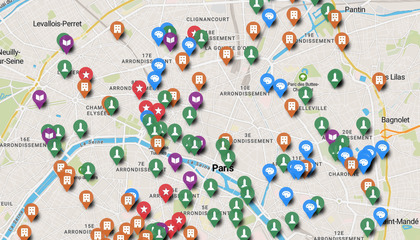
SMITHSONIANMAG.COM | March 23, 2020, 8 a.m.
As efforts to contain the effects of the COVID-19 crisis ramp up, millions of people around the globe are social distancing and self-quarantining themselves in their own homes. To support those in search of diversion from the relentless news cycle, Smithsonian magazine has compiled a collection of 68 online culture, history and science collections you can browse from the comfort of your living room. Whether you’re in the mood to virtually explore ancient Rome, read past presidents’ personal papers or download coloring pages from dozens of international cultural institutions, this roundup has you covered. Listings are bolded and organized by field. (See Smithsonian’s lists of museums you can virtually visit, ways to virtually experience the Smithsonian Institution and Smithsonian educational resources for additional inspiration.)
History

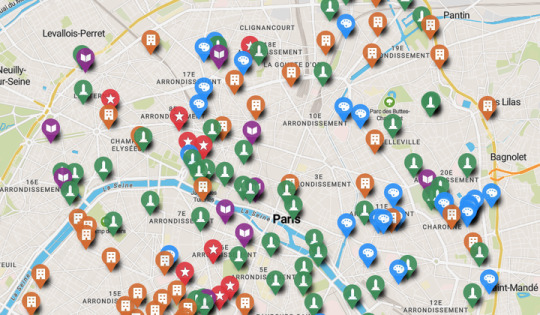
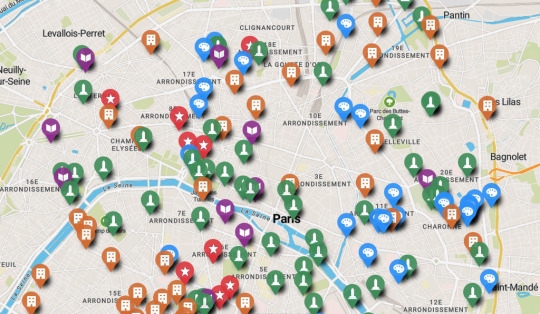

This map of Paris highlights women’s cultural contributions to the French capital.
(Screenshot via Parisian Matrimony)
History lovers may not be able to tour the Smithsonian’s National Museum of American History, the British Museum or the Hermitage in person, but digital history resources spanning time periods, continents and countless topics can provide some respite from these travel woes.
Step back in time via Ancient Athens 3-D or Rome Reborn, then cross the Mediterranean into Egypt for an in-depth look at the famed Nefertiti bust. Other immersive historical offerings include a virtual reality museum featuring five shipwrecked vessels; the Heritage on Edge portal, which tracks climate change’s impact on five Unesco World Heritage Sites; a 3-D digital rendering of Japan’s Shuri Castle, which was ravaged by fire in October 2019; a 3-D scan of the bullets that killed President John F. Kennedy; Below the Surface, a multimedia project that traces Amsterdam’s history through excavated artifacts; and a Sketchfab collection of around 1,700 open-access cultural heritage models, from the Abraham Lincoln Mills life mask to the entrance gates of Ireland’s Menlo Castle and a Scottish boat-building school.
Interactive maps are another option for individuals seeking higher-tech experiences. Google Earth’s Celebrating Indigenous Languages platform spotlights dialects at risk of disappearing, while Parisian Matrimony tracks women’s cultural contributions to the French capital. Mapping the Gay Guides, a newly launched public history initiative, draws on more than 30,000 listings compiled between 1965 and 1980 to visualize American queer spaces’ evolution over time.
Those with more macabre tastes may want to peruse the Survey of Scottish Witchcraft, a tool that visualizes thousands of sites linked with Scotland’s 16th- and 17th-century witch hunts, or the London Medieval Murder Map, which catalogs 142 brutal 14th-century homicides. (In one particularly colorful incident, a man named John de Eddeworth avenged his murdered brother by stabbing the killer “five times with his sword, three times on the back of his head, once on the left side, and once under his left ear.”) Lower-tech maps, including the Library of Congress’ collection of 38,234 digitized travelogues and English king George III’s recently digitized private library of more than 55,000 maps, charts, prints and manuals, are also available.
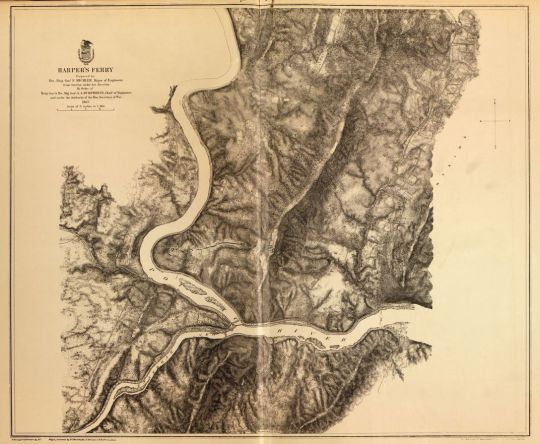
Civil War map of Harper’s Ferry, West Virginia
(Library of Congress)
In the realm of information-heavy databases, highlights range from an index of searchable records that sheds light on New York’s ties to slavery to the Digital Panopticon’s descriptions of 75,688 Victorian-era convicts’ tattoos and the Getty’s archive of 6,000 photos from the waning days of the Ottoman Empire. Troves of digitized documents, meanwhile, run the gamut from historic Mexican cookbooks to a 15th-century British manners book that warns children against picking “thyne errys” and “thy nostrellys,” 155 Persian language texts spanning nearly 1,000 years, one million pages of 16th- through 20th-century content formerly deemed obscene, and the famed Dead Sea Scrolls.
Those hoping to read more personal narratives can check out photographs, prints and papers related to Queen Victoria’s husband, Prince Albert; the only surviving Arabic slave narrative written in the U.S.; and papers penned by such prominent politicians as Theodore Roosevelt, Woodrow Wilson, Warren G. Harding, Benjamin Franklin and Alexander Hamilton. Other public figures whose private lives endure in the digital sphere include civil rights activist Rosa Parks, baseball star Babe Ruth, landscape architect Frederick Law Olmsted, and explorer David Livingstone (as recorded in the diary of his chief attendant, Jacob Wainwright).
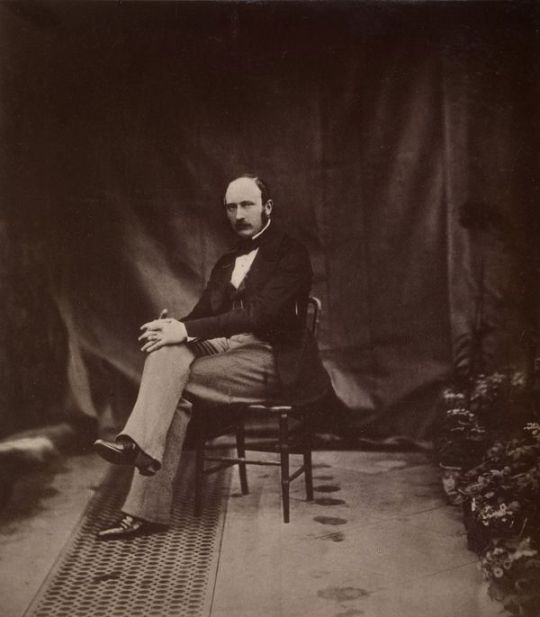
After Roger Fenton, Prince Albert, May 1854, 1889 copy of the original
(Royal Collection Trust / © Her Majesty Queen Elizabeth II 2019)
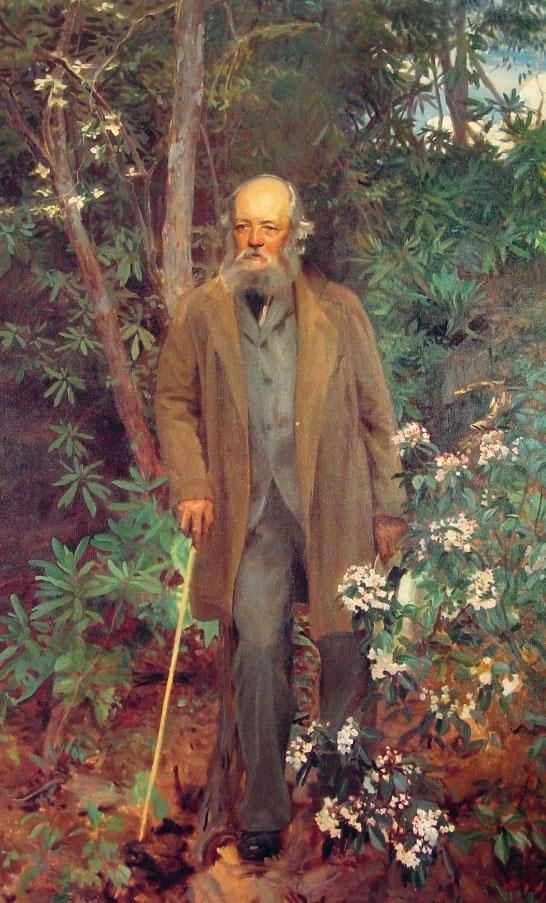
John Singer Sargent, Frederick Law Olmsted, 1895
(Public domain via Wikimedia Commons)
Arts and Culture
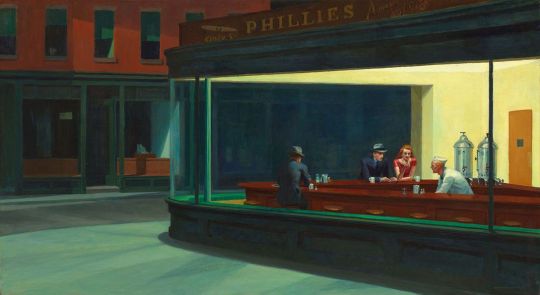
Edward Hopper, Nighthawks, 1942
(Courtesy of the Art Institute of Chicago)
In recent years, museums have increasingly turned to digitization as a tool for widening access to their collections. Among the major cultural institutions with digitized—and often open access—offerings are the Smithsonian, which released 2.8 million images into the public domain earlier this year; Paris Musées, which oversees 14 major museums in France’s capital; nonprofit organization Art U.K.; the Art Institute of Chicago; Taiwan’s National Palace Museum; the Metropolitan Museum of the Art; the National Gallery of Art in Washington, D.C.; the Getty; the Wellcome Library; the Museum of New Zealand; and the Uffizi Galleries. Examples of artworks, artifacts and texts available for download include British psychiatric institutions’ 18th- through 20th-century records, Vincent van Gogh’s The Bedroom and Han dynasty jades.
In addition to digitizing broader collections, many museums have curated archives dedicated to specific topics: The Kunsthaus Zürich has an extensive trove of Dada documents that defy the movement’s long-held association with ephemerality, while the Delaware Art Museum has a portal of papers associated with the Pre-Raphaelite Brotherhood. Illinois State University’s Milner Library offers a digital collection dedicated to the history of circus. The San Francisco-based Letterform Archive has a digital archive of typographical artifacts. And Chicago’s Newberry Library provides online access to more than 200,000 images documenting the history of early America and westward expansion, including watercolors and colored pencil drawings by 19th- and 20th-century Lakota children.
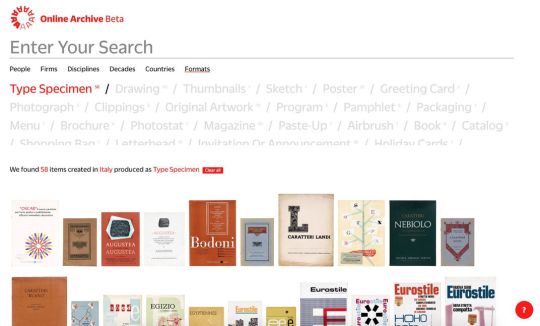
The portal allows users to narrow down search results by “design-specific” terms, as well as geographic, chronological parameters.
(Courtesy of Letterform Archive)
Two giants of the digital cultural sphere—Google Arts & Culture and the Library of Congress—are each home to a dizzying number of virtual resources. The former offers experiences covering 3,000 years of fashion, Pieter Bruegel the Elder’s unseen masterpieces, Latino culture in the U.S., Banksy’s most famous murals, Vermeer’s surviving paintings, armor through the ages, Easter Island and many more topics. The latter has, among others, collections of rare children’s books, Taiwanese watercolors and Chinese texts, braille sheet music, travel posters, presidential portraits, baseball cards, and images of cats and dogs. See the library’s database of digital collections for a more exhaustive overview.
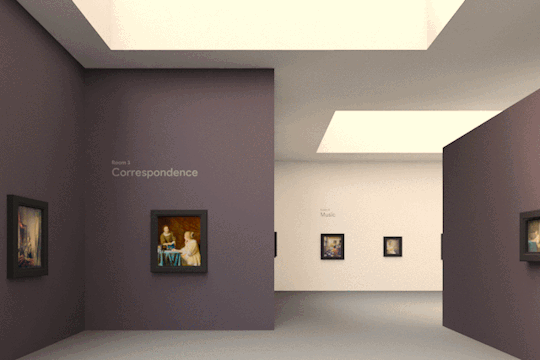
The virtual museum features seven rooms focused on themes such as correspondence, music and flirtation.
(Pocket Gallery / Google Arts & Culture)
Other out-of-the-box ideas include using an app that guides readers through Chaucer’s Canterbury Tales; downloading free coloring pages compiled during the annual #ColorOurCollections campaign—offerings range from a zany 1920s advertisement for butter to medical drawings, book illustrations and a wartime nurse recruitment poster; or reading the New York Public Library’s interactive Insta Novel versions of Alice’s Adventures in Wonderland, Charlotte Perkins Gilman’s “The Yellow Wallpaper” and Kafka’s The Metamorphosis.

Aubrey Beardsley’s illustration for Salome by Oscar Wilde
(Courtesy of the British Library)
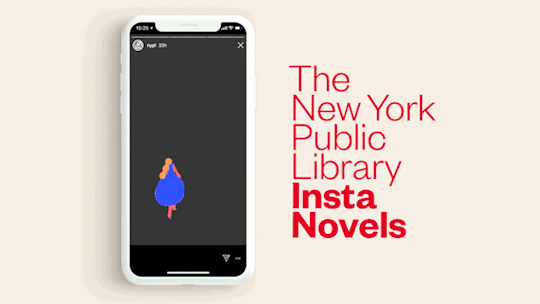
The NYPL’s Insta Novels are available via Instagram.
(Courtesy of the New York Public Library)
Another option for individuals with ample time on their hands is transcribing historical documents and data. The Smithsonian Transcription Center is always looking for volunteers to log field notes, diaries, ledgers, manuscripts and biodiversity specimen labels. Other offerings include the Library of Congress’ By the People project, which asks users to transcribe collections related to women’s suffrage, Rosa Parks, Abraham Lincoln and Spanish law; the Newberry Library’s Transcribing Faith portal, which seeks volunteers eager to analyze early modern manuscripts; and the Citizen Archivist, which asks participants to tag, transcribe and add comments to the National Archives’ records.
Science
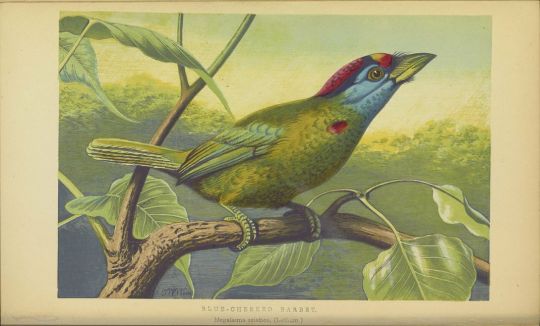
The blue-throated barbet, illustrated here in 1871, is native to southern Asia.
(Courtesy of the Biodiversity Heritage Library)
Flowers, fungi and fauna abound in digitized renderings of the natural world. The open-access Biodiversity Heritage Library, for instance, highlights more than 150,000 illustrations ranging from animal sketches to historical diagrams and botanical studies; the Watercolor World, a portal created to serve as a “visual record of a pre-photography planet,” showcases more than 80,000 paintings of landscapes, seascapes, buildings, animals, plants, ordinary people and historical events.
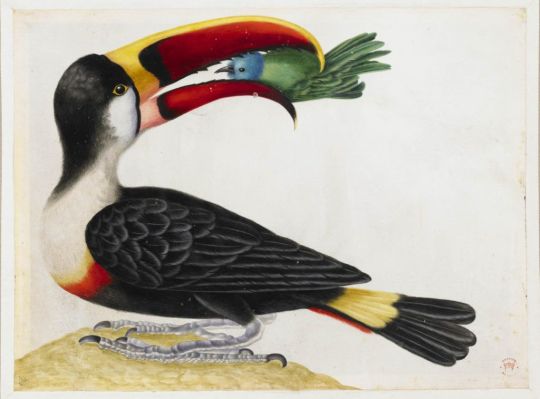
Maria Sibylla Merian, Untitled (Toucan), 1701–1705
(© Trustees of the British Museum)
Other digital science resources include an interactive map that lets users plug in their address to see how it’s changed over the past 750 million years, a collection of unsettling sounds from outer space, Cambridge University’s Isaac Newton papers, Charles Darwin’s manuscripts, hundreds of case files written by a pair of 17th-century astrologers and physicians, a map that visualizes all 21 successful moon landings, and a medical pop-up book dating to the 17th century.
#News
1 note
·
View note